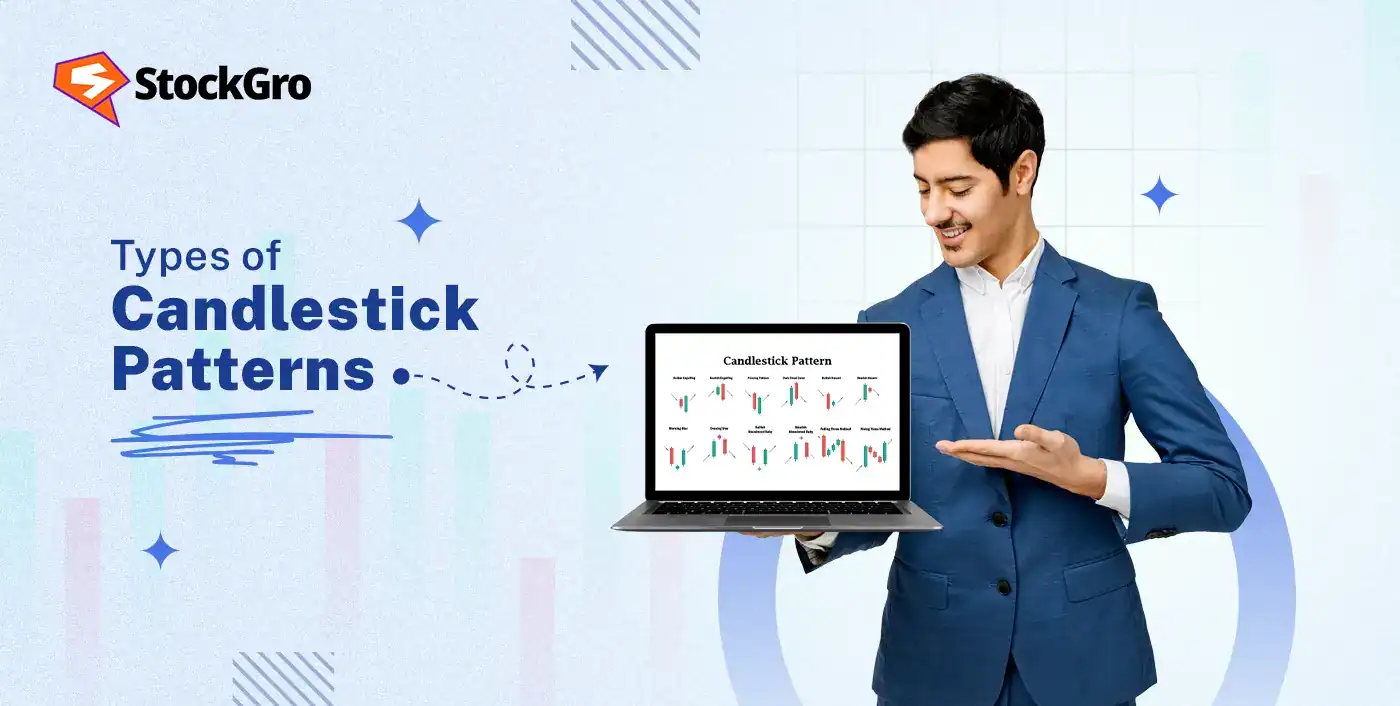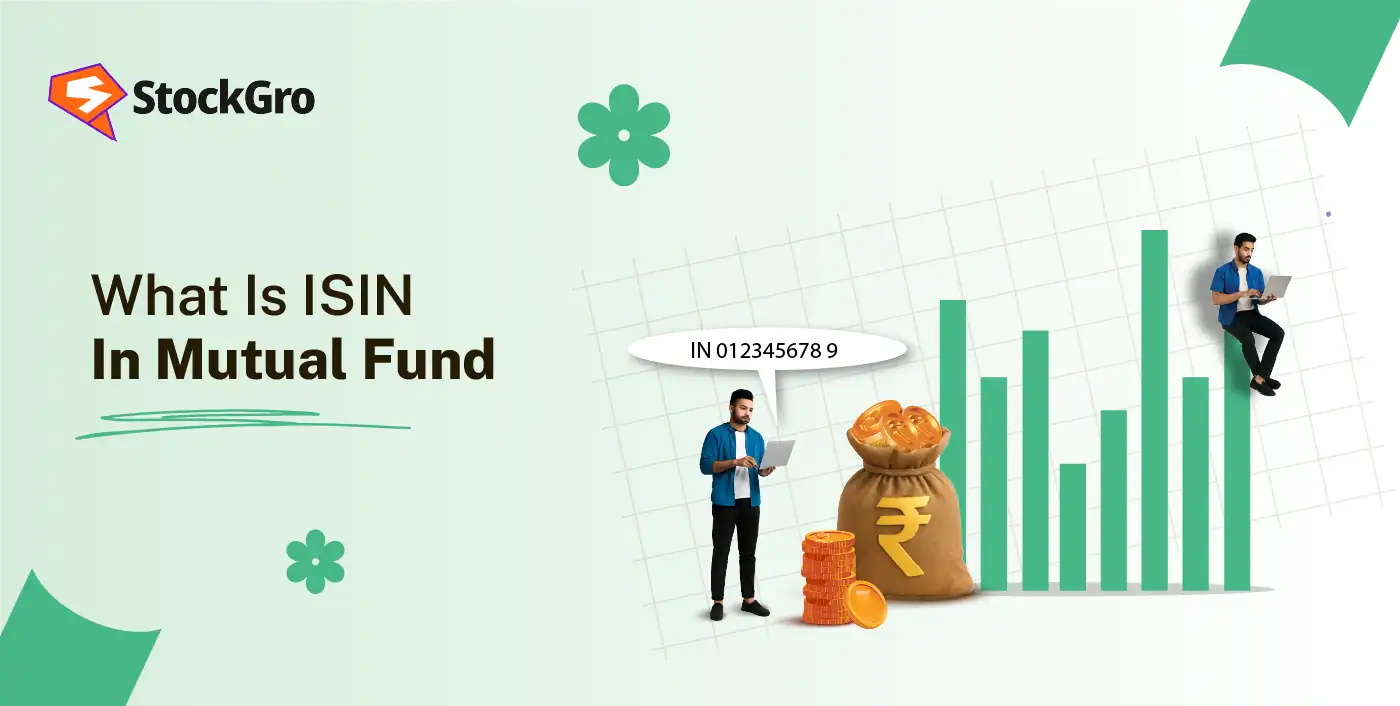
A SEBI report shows that almost 91% of retail traders lose money in the stock market, mainly because they enter or exit trades at the wrong time. Price charts alone don’t always show if a move is strong or weak, which makes decisions harder.
One way to avoid this is by learning the types of candlesticks patterns, which turn market activity into clear signals. By spotting shapes like hammers, engulfing candles, or dojis, traders can understand market sentiment better. In this blog, we discuss the main candlestick patterns and their use in detail.
Types of Candlestick Patterns
In technical analysis, the main types of candlesticks patterns are classified based on market behavior. These are as follows:
- Reversal Candlestick Patterns
Reversal patterns show a change in price direction. They often appear after a strong upward or downward move. These reversal trading strategies point out where earlier strength is weakening and the opposite side is gaining control.
- Continuation Candlestick Patterns
Continuation patterns are the ones that suggest the existing moves might continue rather than slowing down. These continuation patterns usually show brief pauses before the market resumes its earlier course.
- Indecision Candlestick Patterns
These patterns indicate a balance between buyers and sellers, reflecting indecision in trading. They are often marked by small bodies and long wicks, showing a tug-of-war without clear dominance.
Single-Candle Patterns
Some widely studied various single candle types of candlesticks patterns in candlestick charts are:
- Hammer
A hammer candlestick pattern setup shows a tiny body near the top with an extended lower shadow. It forms after declines, where buyers attempt to absorb selling pressure. The candle signifies a floor being tested before price recovery.
- Hanging Man
The hanging man looks like the hammer but occurs after a price rise. Its long lower wick signals intraday selling despite buyers closing higher. The pattern shows a sign of pressure on upward moves.
- Inverted Hammer
An inverted hammer features a tiny body near the base with an extended upper wick. It appears after a downward phase, with buyers testing higher ground. The candle displays attempts to counter earlier weakness.
- Shooting Star
The shooting star shows a small body at the bottom and a long upper wick. It appears after a price rise, selling activity near the top. This candle reflects exhaustion after aggressive buying.
- Doji Variants
A doji candlestick forms when the open and close are nearly equal, leaving little or no body. Variants like dragonfly, gravestone, and long-legged are primary types of candlesticks patterns. They each represent different balances of market forces.
- Spinning Top
A spinning top candlestick has a small real body and equally long wicks on both sides. It represents active buying and selling within the same session. The balance across both forces makes the candle appear neutral.
- Marubozu
A marubozu candlestick has a long solid body without shadows on either side. It shows complete dominance of one side, whether bullish or bearish. The absence of wicks showcase uninterrupted control over price.
Dual-Candle Patterns
Next on our list is the commonly observed dual-candle formations are:
- Bullish Engulfing
The bullish engulfing pattern forms when a large green bar fully covers the earlier red bar. It shows buyers taking over strongly after sellers dominated earlier. The size of the second candle shows the reversal power.
- Bearish Engulfing
The bearish engulfing appears when a big red candle consumes a smaller green one. It reflects sellers taking charge after a short bullish phase. The engulfing action emphasises the strength of selling pressure.
- Bullish Harami
The bullish harami consists of a small green candle inside a larger red one. It signals reduced intensity of selling compared to the previous session. Buyers appear to be regaining space within the prior range.
- Bearish Harami
A bearish harami features a small red candle inside a larger green one. It shows that buying enthusiasm has slowed from the previous day. The smaller body signals hesitation within the upward phase.
- Cross Harami
The cross harami includes a doji that sits inside the earlier candle’s body. This highlights balance after a more decisive move the day before. The setup suggests that the prior force has weakened.
- Piercing Line
The piercing line starts with a red candle followed by a green one that closes above its midpoint. It shows buyers stepping back after a strong selling session. The placement of the second close makes it noticeable.
- Dark Cloud Cover
The dark cloud cover occurs when a red bar finishes below the midpoint of the earlier green bar. It signals sellers pushing back after buyers had control. The clouding effect represents pressure weighing on gains.
- Matching Low
The matching low pattern takes shape when two candles close at the same lower level. This shows a point where sellers stop driving the price further down. The repeated level creates a possible base of interest.
Triple-Candle Patterns
The important triple candlestick patterns spotted in chart patterns are:
- Morning Star
The morning star sequence includes a long red bar, a short-bodied bar, and then a green bar. It reflects buying strength after a phase of decline. The sequence shows sellers fading and buyers returning.
- Evening Star
The evening star has a large green candle, a small-bodied one, and then a red candle. It appears after an upward phase and highlights selling strength. The setup shows buyers losing ground.
- Three White Soldiers
The three white soldiers pattern shows three straight green bars, each ending higher than the previous. The candles usually have small wicks, showing steady upward price moves. It often follows a period of decline or sideways action.
- Three Black Crows
Three black crows consist of three back-to-back red candles, each finishing lower. It shows steady selling pressure across sessions. The repeated decline demonstrates market dominance by sellers.
- Three Inside Down
It starts with a long green bar candle, then a smaller red bar inside it, followed by another red bar. The second candle signals reduced buying strength, while the third confirms selling pressure. The three inside down pattern is often studied after an up-move.
- Three Inside Up
The up three inside up pattern begins with a large red bar, then a smaller green bar, and another green bar. It highlights buying returns after a downward stretch. Sellers appear to be giving up ground.
- Three Outside Down
This three outside down pattern starts with a green candle, then a bigger red candle that engulfs it, and finally another red candle. The second candle demonstrates a prominent downward push overtaking the prior rise. The final red candle reinforces the continuation of selling activity.
- Three Outside Up
It starts with a red candle, followed by a larger green one, and then another green. The three outside up pattern reflect extended buying beyond the earlier decline. The second candle’s size makes it significant.
- Rising Three Methods
The Rising three methods candlestick formation show a long green candle, a cluster of small red candles, and another green one. It represents the continuation of an upward phase. The middle section works like a pause before resuming.
- Falling Three Methods
The failing three methods candlestick pattern begins with a long red candle, followed by short green candles, and finishes with another red candle. It represents the continuation of a downward move. The center candles act as a short interruption.
Other Unique Patterns
A few lesser-seen advanced candlestick patterns that stand apart from regular ones are as follows:
- Island Reversal
The island reversal forms when a cluster of candles is isolated by gaps on both ends. It indicates a sudden change in market direction after a sharp move. The pattern looks visually isolated, hence its name.
- Darth Maul (High Wave Spinning Top)
The high wave candlestick pattern has a tiny real body with very long wicks on both ends. It shows heavy movement in both directions within one session. The shape resembles a high wave or “Darth Maul” effect.
How to Trade with Candlestick Patterns
Candlestick trading works best when applied with context, confirmation, and supporting tools, as follows:
- Pattern Interpretation & Strategy
Start by identifying key candlestick formations such as doji, hammer, engulfing, or shooting star. Every pattern narrates a story about buying or selling strength. For example, a hammer after a downtrend may point to an upcoming reversal. However, placement matters; patterns near support or resistance carry more weightage. Always think of them as signals to determine trading strategies, not guarantees.
- Confirmation Techniques
Never rely on candlesticks in isolation. Look for confirmation through subsequent price action or volume behavior. A bullish engulfing candle gains strength if the next session closes higher. Similarly, observing market sentiment or broader trend direction helps validate the signal. Confirmations reduce false triggers and add reliability to your analysis.
- Combine with Indicators
Candlestick insights strengthen further when paired with indicators. Momentum indicators like RSI can confirm overbought or oversold conditions, while moving averages help identify the broader trend. Volume indicators, too, can reveal whether price action has genuine strength behind it. This mix creates a balanced method for making trading choices.
Conclusion
The study of chart behavior is a window into how markets communicate. Learning about the types of candlesticks patterns is not about prediction but about observation. Each shape adds a layer to the broader narrative of price action, giving readers a structured lens to view momentum and hesitation. These visual signals enrich market understanding, making technical study more complete without depending solely on numerical data.
FAQs
Candlestick patterns include single, double, and multiple candle formations such as doji, hammer, engulfing, morning star, evening star, three white soldiers and more. These patterns help traders interpret market sentiment and potential price movements.
Candlestick patterns reveal buyer and seller strength through shapes and combinations. Patterns like strong bullish candles suggest upward momentum, while bearish patterns hint at selling pressure, aiding trend identification and potential reversals.
The bullish engulfing pattern is a popular bullish reversal sign where a large green candle fully engulfs the prior smaller red candle. It signals strong buying pressure and potential shift from a downtrend to an uptrend, widely used by traders to confirm reversals.
Single candlestick patterns form from one candle’s shape and size (e.g., Hammer), indicating short-term sentiment. Multi-candlestick patterns require two or more candles to form broader signals like reversals or continuations, providing stronger confirmation.
Reversal patterns include doji, hammer, engulfing, and morning star; they signal trend changes. Continuation patterns like rising three Methods and failing three methods suggest the current trend will continue. Identification depends on pattern context within the trend.

